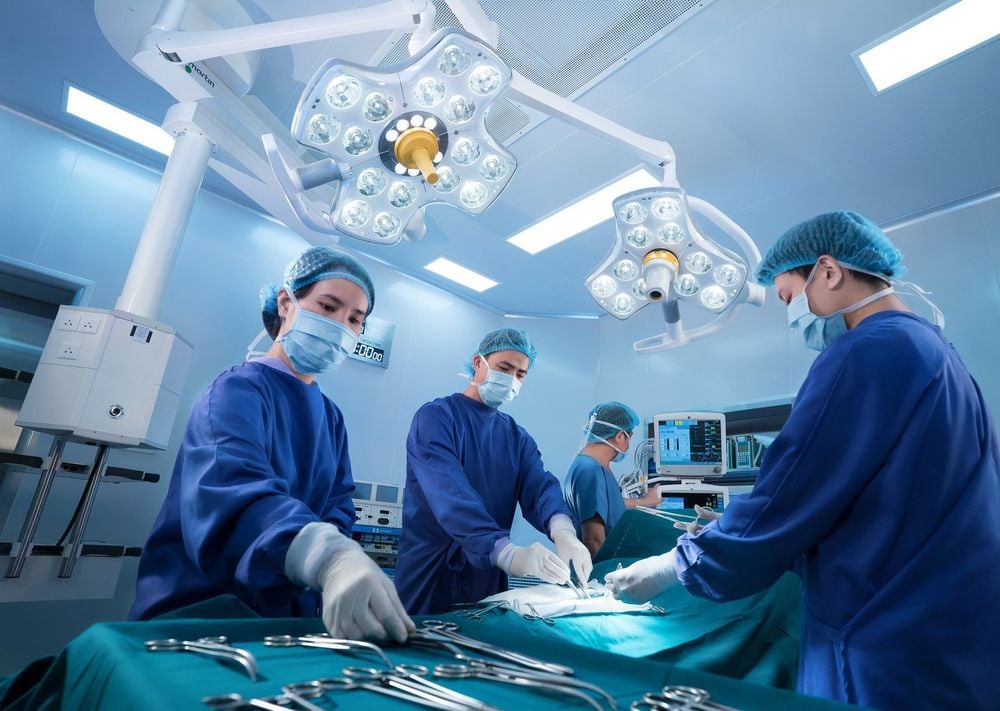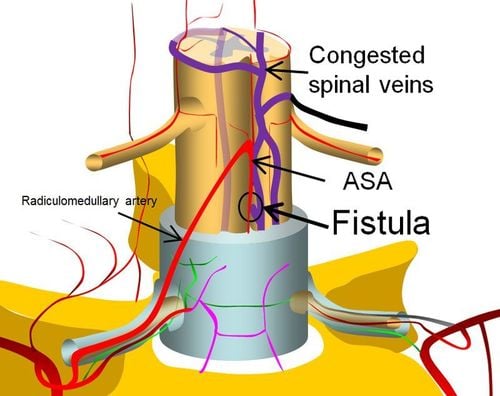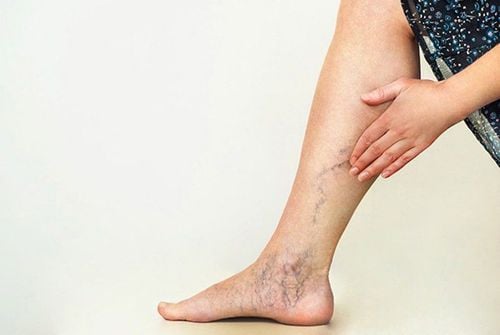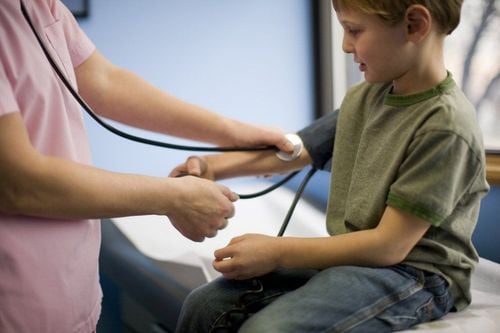This is an automatically translated article.
The article is professionally consulted by Master, Doctor Nguyen Thi Thanh Binh - Rehabilitation Doctor - Department of General Surgery - Vinmec Danang International General HospitalVascular malformation is a congenital and very dangerous disease that can appear anywhere in the body but usually occurs in the brain and spine, once considered an incurable disease. However, with the advancement of medical science, medical experts have found a way to help treat cases of vascular malformations safely and with fewer complications. .
1. What is a vascular malformation?
Cerebrovascular malformation is a phenomenon of abnormal and disordered blood vessels in the brain, common with 0.1-4% of the population, these malformations often connect cerebral arteries and veins without going into the brain. Through the capillaries, there is no blood supply to the brain parenchyma. This is a disease with congenital abnormalities that appear from the fourth to the eighth week of pregnancy, the cause of which is still to be studied. Most cerebral vascular malformations persist in the body for a long time without being detected and without any symptoms. They are detected mainly in the under 45 years of age in three situations: cerebral hemorrhage (accounting for 50-60%), headache, epilepsy (accounting for 40-45%) or incidentally (5-10%).
Vascular malformations are very dangerous, they can directly affect the control of the brain on the activities of the body, if detected and treated too late can lead to death.
Vascular malformations include: Arteriovenous malformation, venous malformation, lymphatic malformation or a combination.

Dị dạng mạch máu có thể dẫn đến tử vong
2. Diagnosis of vascular malformation?
To diagnose a cerebrovascular malformation, a neurologist will review the current symptoms and conduct a physical exam: Cerebral angiography, computed tomography (CT) scan, magnetic resonance imaging ( MRI).
3. Effective treatment of vascular malformations
In the past, surgery was used to treat vascular malformations. At that time, specialist doctors will remove many arteries that feed the malformation with the hope of reducing blood supply, helping to reduce painful symptoms for the patient. However, the reality shows that this method is not very effective, because there are many cases of patients with arteriovenous malformations that have given birth to many new blood vessels, making the condition worse. .
Phẫu thuật dị dạng mạch máu không mang lại hiệu quả cao
4. Notes when taking care of patients with vascular malformations?
After a patient has surgery or drug treatment, the risk of sequelae is very high, so proper treatment and care for the patient plays a huge role in recovering the patient's health. The patient's family should refer to the method of treatment and care for the patient with cerebrovascular malformation according to the following protocol:4.1 Rehabilitation of motor function Massage the patient's limbs and muscles regularly to minimize pain. the risk of tendon retraction, muscle atrophy due to sedentary activities. Participate in exercises to restore motor and cognitive function, support patients to perform basic motor movements, stretch limbs twice a day. Maintain clean personal hygiene, make sure the body is always dry before the patient lies down. Patients come to the hospital as scheduled to participate in physical therapy exercises, helping to quickly recover. Communicate with the patient properly to improve the functioning of the nervous system.

Bệnh nhân luyện tập co duỗi chân tay mỗi ngày để nhanh phục hồi
4.2 Nutrition Patients after surgery, treatment of cerebrovascular malformations should consume from 1,800-2,200 kcal per day. Choose foods rich in fiber, in fruits and vegetables. Should choose frugal foods, limit fat and should not use too many spices in the patient's diet. The diet should focus on liquid and soft foods so that the patient can easily absorb and protect the patient's digestive tract. Eat small meals each day, do not let the patient eat too full, affect the digestive tract and may cause the patient to have difficulty breathing, choking. For cases where the patient is in a deep coma, or in a vegetative state, the patient will be given nutrition through a tube with supervision and guidance from the doctors in charge. In order not to endanger the patient, the fluid will be slowly and gently infused into the patient's body. To register for consultation, examination and treatment at Vinmec International General Hospital, customers can immediately contact Vinmec International General Hospital systems nationwide or quickly visit the website www. vimec.com for timely support or register online HERE.














